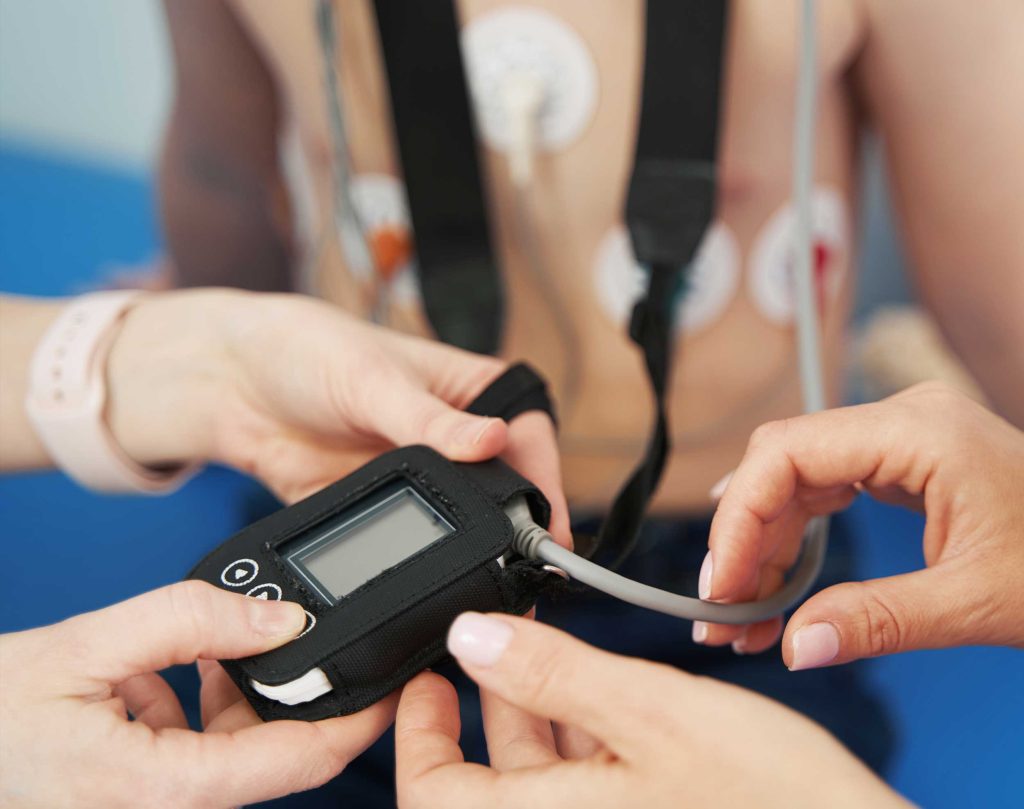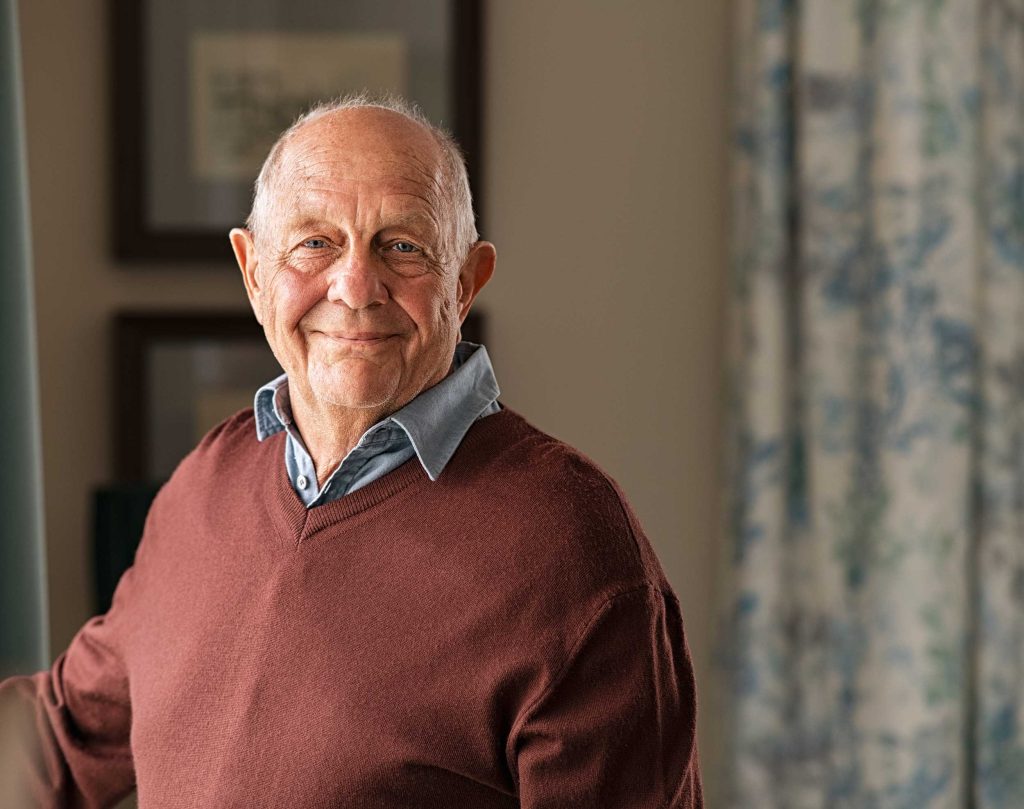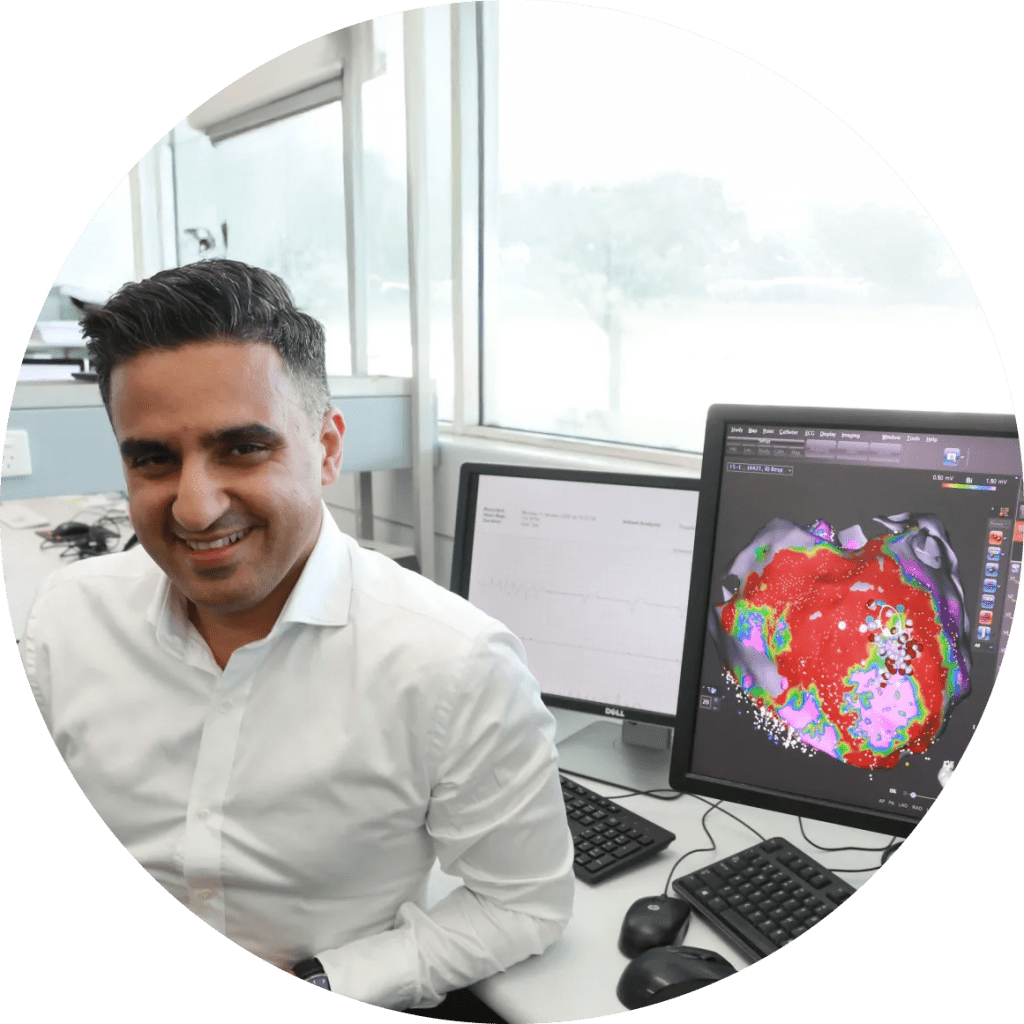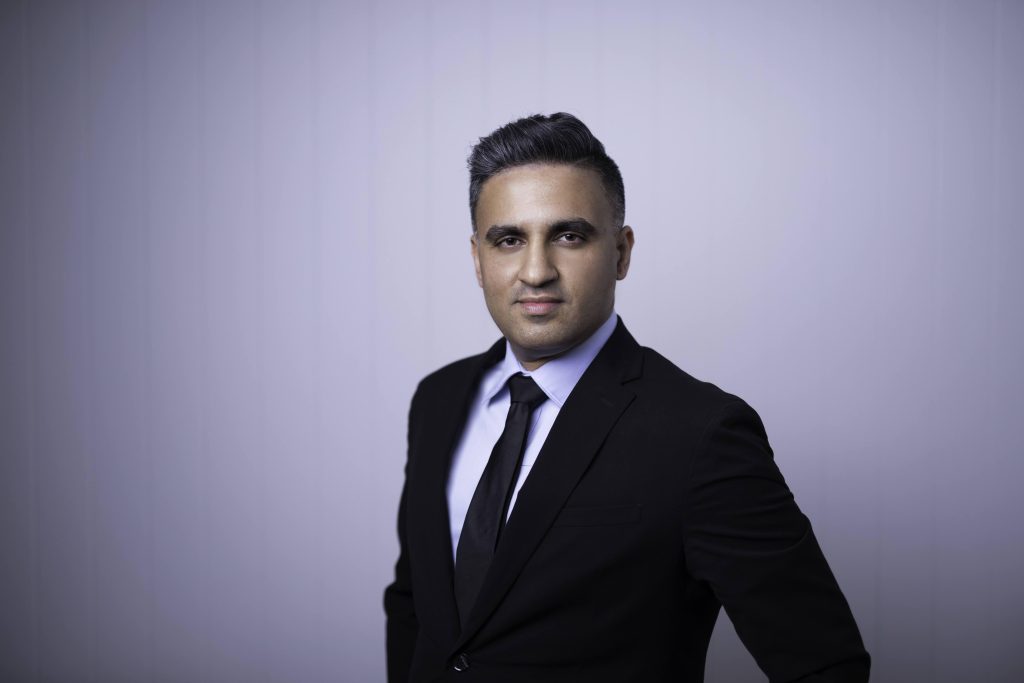Holter & Ambulatory Rhythm Monitoring

Accurate, real-time insight into your heart’s rhythm
Not all heart rhythm disturbances occur during a clinic visit. Many arrhythmias are intermittent—appearing unpredictably during daily life, rest, or physical activity. Holter and ambulatory rhythm monitoring provide continuous, real-world data on your heart’s electrical activity, helping to detect abnormalities that may not be seen on a standard ECG.
At his Sydney practice, A/Prof Saurabh Kumar offers a comprehensive range of ambulatory rhythm monitoring services tailored to the patient’s symptoms, frequency of episodes, and clinical background. As a Cardiologist and Interventional Electrophysiologist, he uses these tools to support accurate diagnosis and guide long-term management of both common and complex cardiac arrhythmias.
When is Ambulatory Monitoring Recommended?
Palpitations
Intermittent sensations of a racing, skipping, or fluttering heartbeat are one of the most frequent symptoms prompting cardiac evaluation. While often benign, palpitations can sometimes reflect underlying rhythm disturbances that require treatment.
Unexplained syncope (fainting)
Monitoring helps identify bradycardia, transient arrhythmias, or pauses that may lead to loss of consciousness.
Monitoring for paroxysmal atrial fibrillation (AF)
Bradycardia or tachycardia investigation
Post-ablation or device implantation assessment
According to the Heart Foundation of Australia, over 500,000 Australians are living with atrial fibrillation, and many cases remain undiagnosed. Ambulatory ECG monitoring plays a key role in uncovering silent or transient AF that may otherwise go untreated.

Types of Monitoring Services Offered
24–72 Hour Holter Monitoring
7–14 Day Extended Patch Monitoring
Event-Triggered Monitors (Patient-Activated)
Symptom-Rhythm Correlation
Atrial Fibrillation (AF) Burden Assessment
In patients with known paroxysmal AF, monitoring is used to quantify how much time is spent in arrhythmia. This information is important for tailoring medication, planning ablation procedures, or determining whether anticoagulation is needed.
Nocturnal And Exertional Arrhythmia Evaluation
The Monitoring Process
The monitoring process is straightforward, comfortable, and completely non-invasive. It typically involves the following steps:
- Initial consultation – A/Prof Kumar will review your history, symptoms, and ECG findings to determine the most appropriate type and duration of monitoring.
- Device fitting – The chosen monitor is applied during a brief clinic appointment. You will receive instructions on how to wear, maintain, and record symptoms during the monitoring period.
- Data recording – The device continuously tracks your heart rhythm, storing data to be analysed after completion.
- Symptom logging – You will be provided with a physical or digital diary to record any symptoms you experience, with time stamps for correlation.
- Data analysis and report – Once monitoring is complete, the device is returned and the data are carefully reviewed. A/Prof Kumar will analyse the results in detail and provide a clear explanation, along with next steps for treatment or further testing.
Precision-Driven, Patient-Focused Care


Take Control of Your Heart Health Today.
A/Prof Saurabh Kumar brings over 15+ years of clinical expertise to the care of patients with heart rhythm disorders and general cardiac conditions. He is widely regarded within the Australian cardiology community and internationally for his depth of knowledge, collaborative style, and commitment to patient-centred care.
He holds dual roles as a Staff Specialist Cardiologist and Cardiac Electrophysiologist at Westmead Hospital and Clinical Associate Professor of Medicine at the University of Sydney. He currently serves as the Program Director for Ventricular Arrhythmias and Sudden Cardiac Death at Westmead Hospital and is the Translational Electrophysiology Lead at the Westmead Applied Research Centre, University of Sydney.